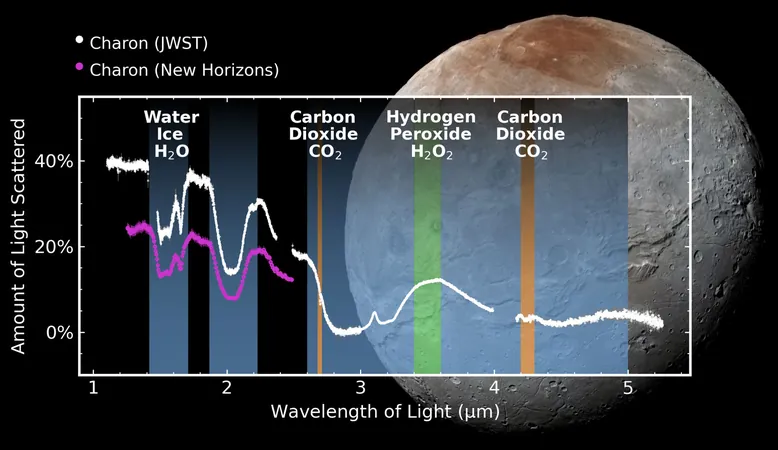
Major Breakthrough: Webb Telescope Unveils Carbon Dioxide and Hydrogen Peroxide on Charon, Pluto’s Largest Moon
2024-10-05
Major Breakthrough: Webb Telescope Unveils Carbon Dioxide and Hydrogen Peroxide on Charon, Pluto’s Largest Moon
In an astonishing discovery, the James Webb Space Telescope (JWST) has identified frozen carbon dioxide and hydrogen peroxide on Charon, the largest moon of Pluto. This marks the first time these compounds have been detected on Charon's surface and adds a significant chapter to our understanding of the dynamic chemistry that exists outside of our home planet.
Utilizing its advanced infrared optics, the Webb telescope has been able to observe cosmic phenomena with unprecedented clarity. It has provided insights into the early formation of galaxies and unraveled the complex atmospheric compositions of exoplanets. Closer to home, it has delivered breathtaking images of our Solar System’s giants, including Jupiter's auroras and Saturn's iconic rings.
A research team led by Sylvia Protopapa at the Southwest Research Institute (SwRI) conducted detailed examinations of the Pluto-Charon system using Webb's Near-Infrared Spectrograph (NIRSpec). Their findings contribute to existing knowledge gleaned from ground-based telescopes and NASA's New Horizons mission, which notably conducted a historic flyby of Pluto in 2015.
Protopapa, who played a pivotal role in the New Horizons mission, collaborated with esteemed scientists from multiple institutions, including the Space Telescope Science Institute and NASA's Goddard Space Flight Center. Their groundbreaking research was recently featured in the journal Nature Communications.
Between 2022 and 2023, the team performed four observations of the Pluto-Charon system, allowing for comprehensive coverage of Charon's northern hemisphere. This data revealed distinct signatures of carbon dioxide. The research team deduced that the carbon dioxide likely forms a thin layer over a subsurface that is primarily composed of water ice. Protopapa emphasized, 'Charon’s surface offers a unique perspective on the geological processes at play in the Kuiper Belt due to its lack of obscuring volatile ices like methane.'
Moreover, the presence of hydrogen peroxide implies that the moon's water ice-rich surface experiences breakdown from ultraviolet light and cosmic rays, a process known as photolysis. This phenomenon resembles how solar radiation breaks down methane into tholins, leading to the reddish coloration observed on many celestial bodies in the outer Solar System.
Dr. Ujjwal Raut from SwRI's Cornell Laboratory for Accelerator-based ScienceS and Education, who co-authored the study, pointed out that laboratory experiments have established the conditions under which hydrogen peroxide can form in carbon dioxide and water ice mixtures, reinforcing their findings from space observations.
This pivotal research not only sheds light on Charon’s intricate surface chemistry but also enhances our understanding of similar midsized bodies in the outer Solar System. The capability of the Webb Telescope to derive complex surface compositions paves the way for future studies, including the ongoing investigation of exoplanets that may harbor conditions suitable for life.
What's next for the incredible Webb Telescope? As it continues to unlock secrets of the cosmos, astronomers are eager to see how these findings about Charon might apply to the exploration of other distant worlds. This groundbreaking work underscores the potential for astronomical discoveries that can reshape our understanding of the universe around us.



 Brasil (PT)
Brasil (PT)
 Canada (EN)
Canada (EN)
 Chile (ES)
Chile (ES)
 España (ES)
España (ES)
 France (FR)
France (FR)
 Hong Kong (EN)
Hong Kong (EN)
 Italia (IT)
Italia (IT)
 日本 (JA)
日本 (JA)
 Magyarország (HU)
Magyarország (HU)
 Norge (NO)
Norge (NO)
 Polska (PL)
Polska (PL)
 Schweiz (DE)
Schweiz (DE)
 Singapore (EN)
Singapore (EN)
 Sverige (SV)
Sverige (SV)
 Suomi (FI)
Suomi (FI)
 Türkiye (TR)
Türkiye (TR)